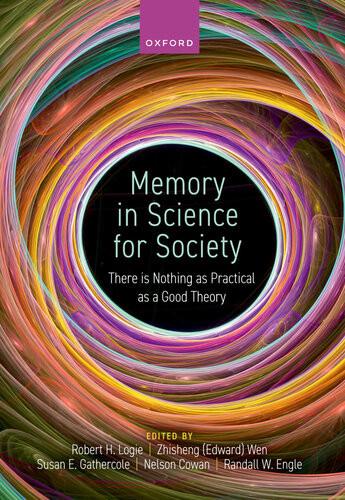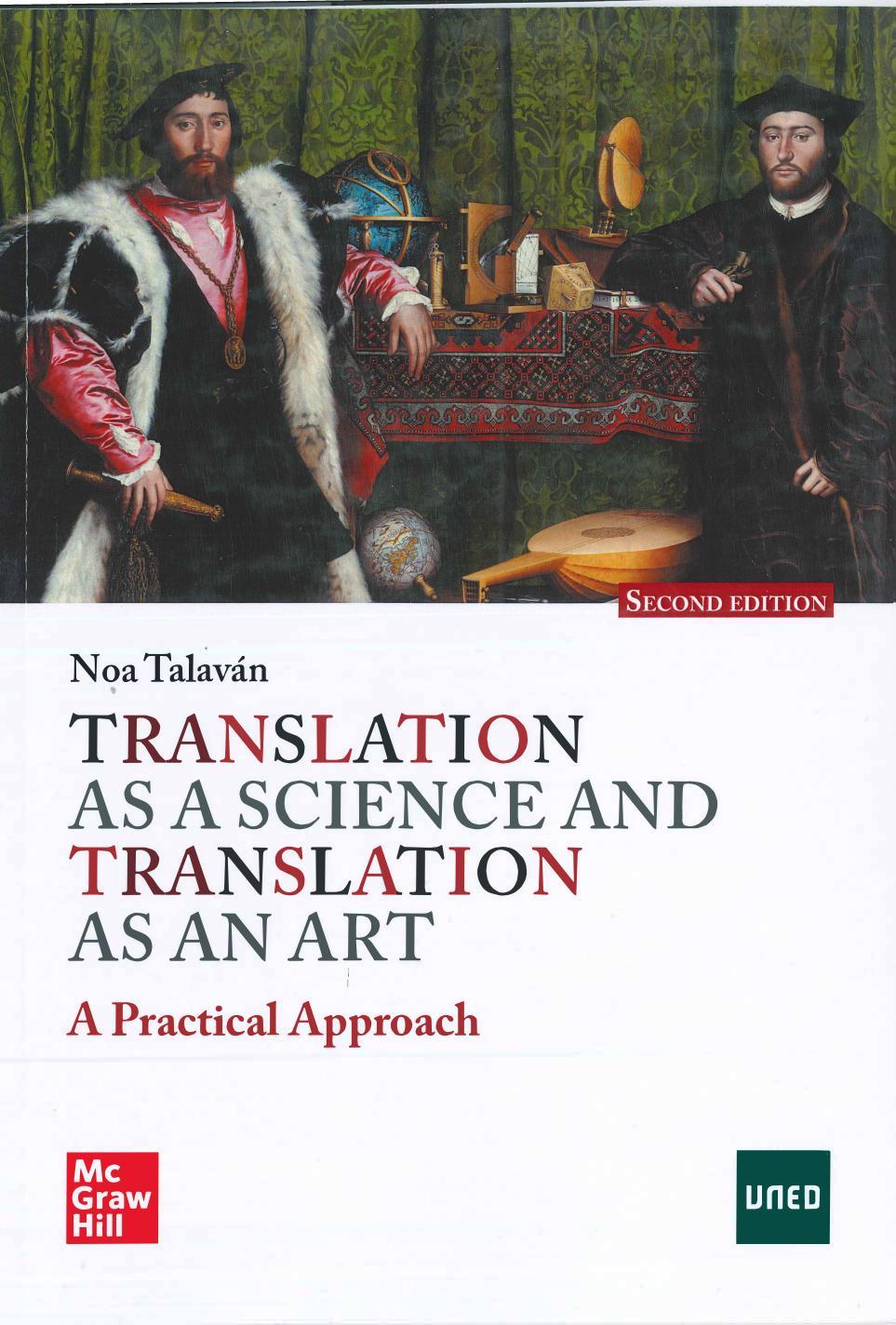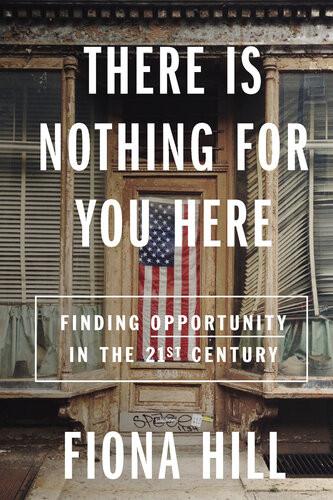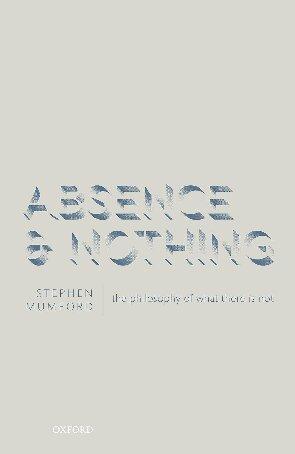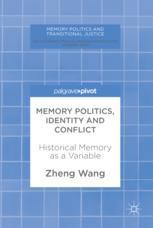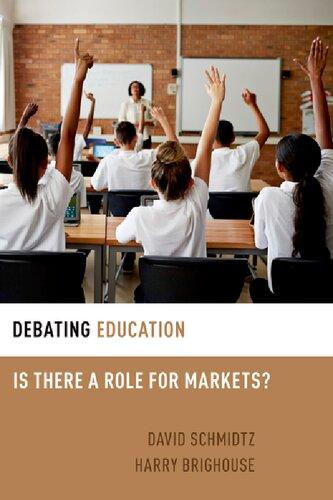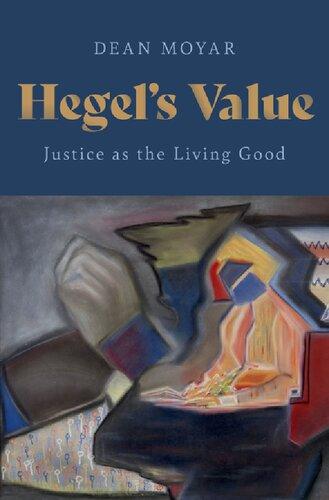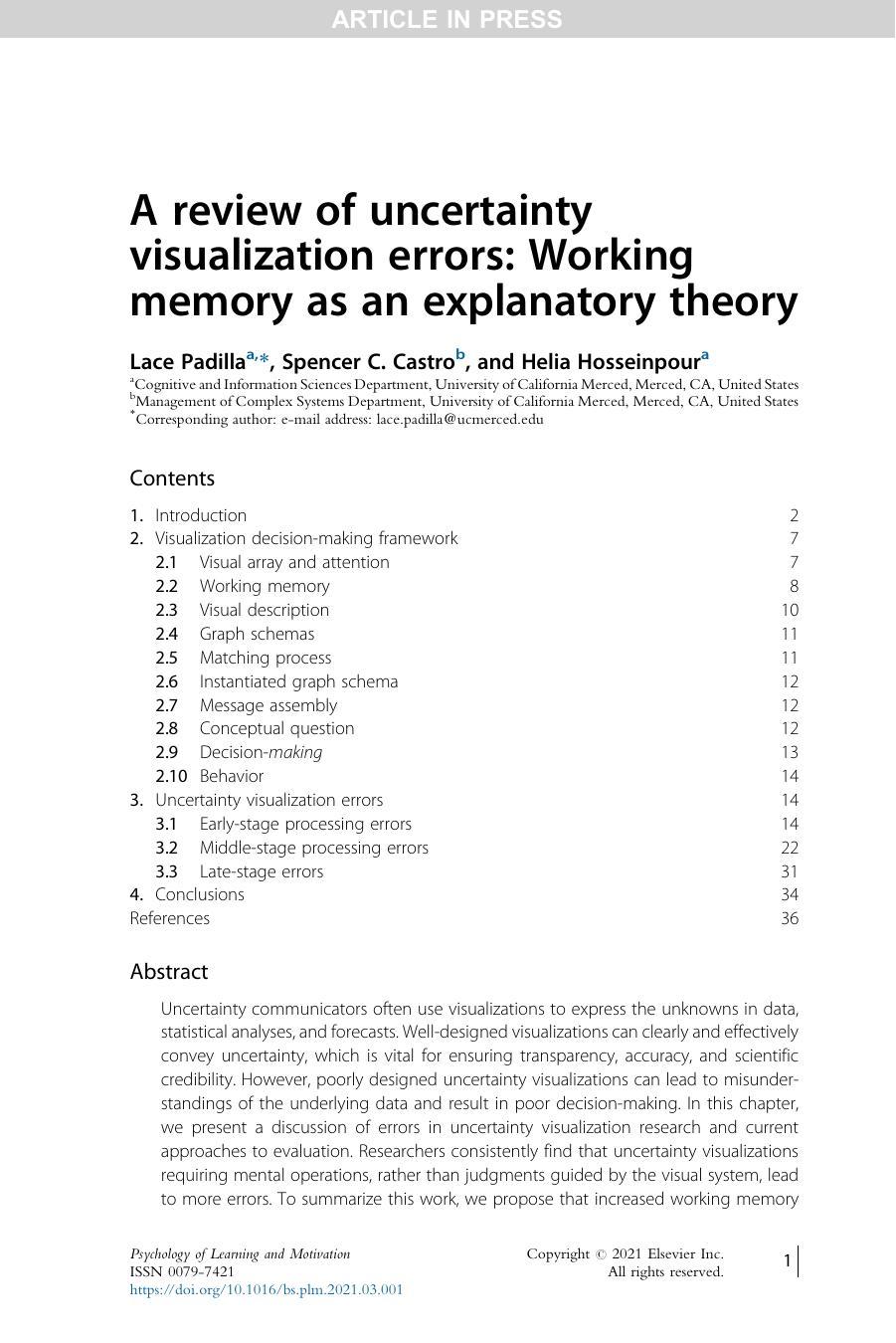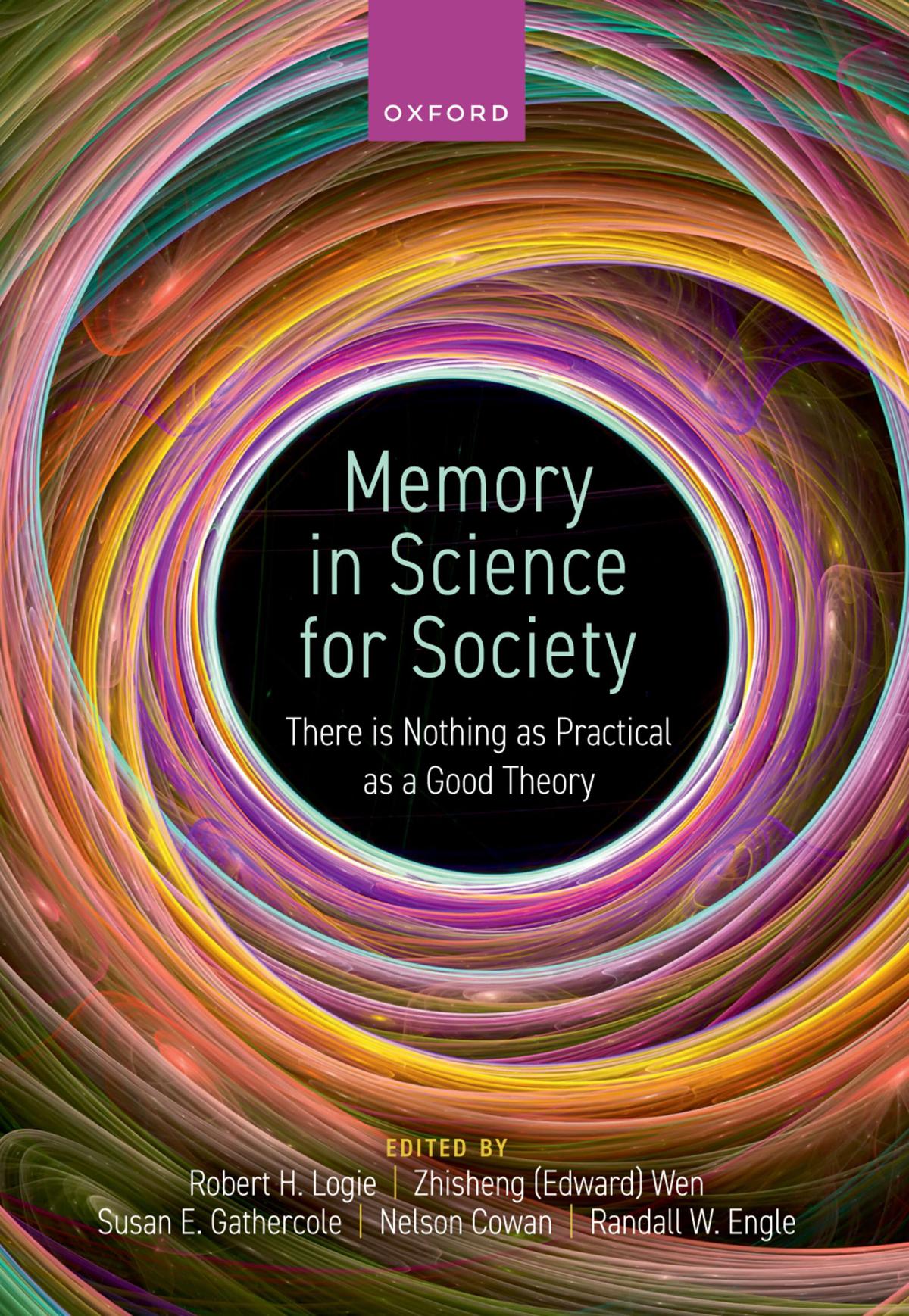Memory in Science for Society
There is Nothing as Practicalas a GoodTheory
Editedby
Robert H. Logie, Zhisheng (Edward) Wen, Susan E. Gathercole, Nelson Cowan, and Randall W. Engle
Great Clarendon Street, Oxford, OX2 6DP, United Kingdom
Oxford University Press is a department of the University of Oxford. It furthers the University’s objective of excellence in research, scholarship, and education by publishing worldwide. Oxford is a registered trade mark of Oxford University Press in the UK and in certain other countries
© Oxford University Press 2023
The moral rights of the authors have been asserted
First Edition published in 2023
All rights reserved. No part of this publication may be reproduced, stored in a retrieval system, or transmitted, in any form or by any means, without the prior permission in writing of Oxford University Press, or as expressly permitted by law, by licence or under terms agreed with the appropriate reprographics rights organization. Enquiries concerning reproduction outside the scope of the above should be sent to the Rights Department, Oxford University Press, at the address above
You must not circulate this work in any other form and you must impose this same condition on any acquirer
Published in the United States of America by Oxford University Press 198 Madison Avenue, New York, NY 10016, United States of America
British Library Cataloguing in Publication Data
Data available
Library of Congress Control Number: 2022952036
ISBN 978–0–19–284906–9 eISBN 978–0–19–266558–4
DOI: 10.1093/oso/9780192849069.001.0001
Oxford University Press makes no representation, express or implied, that the drug dosages in this book are correct. Readers must therefore always check the product information and clinical procedures with the most up-to-date published product information and data sheets provided by the manufacturers and the most recent codes of conduct and safety regulations. The authors and the publishers do not accept responsibility or legal liability for any errors in the text or for the misuse or misapplication of material in this work. Except where otherwise stated, drug
dosages and recommendations are for the non-pregnant adult who is not breastfeeding
Links to third party websites are provided by Oxford in good faith and for information only. Oxford disclaims any responsibility for the materials contained in any third party website referenced in this work.
Preface
Developing
theory through applications and
developing applications through theory: the influence of Alan Baddeley
Professor Alan Baddeley is a world-leading authority on human memory and cognition, best known for his multicomponent model of working memory (Baddeley & Hitch, 1974). In general psychology and cognitive sciences, there is no psychologist more central than Alan Baddeley to the progress that has been made in the last 50 years in understanding the mind, brain, and behaviour. His wideranging influence penetrates the diverse domains of human memory, cognition, development, and neuropsychology, and many practical applications of cognitive psychology. Besides his many distinguished honours and awards (CBE, FBA, FRS, FMedSci), and honorary degrees from the universities of Bristol, Edinburgh, Essex, Stirling, and Umea, Alan has published many influential monographs, textbooks, edited volumes, and numerous (theoretical and empirical) papers that have been cited very frequently, reaching a staggering Google Citation Score of over 205,000 (as of 11 April 2022). In recognition of his landmark contributions to psychological sciences and human cognition, this volume is presented both as a book on theory and application of memory research for a broad readership, and as a tribute for Alan to honour and celebrate his enormous contribution and influence across the topics discussed in the individual chapters.
This volume also is a personal thank you to Alan from many of the scholars who have been inspired by him and benefited from his insights and intellectual curiosity over many decades. We have
invited chapters from leading international scholars, including Alan’s close colleagues and associates, collaborators, and friends as well as others whose research has been influenced directly by his pioneering and groundbreaking work. More detail on the different areas of Alan’s work is provided in his own chapter (Chapter 2), and within the other chapters. Here, each of the volume editors, and one of his closest colleagues (Graham Hitch), briefly share some thoughts on the considerable scholarly and personal influences gained from knowing Alan personally as well as from working with him and reading his work.
Graham Hitch
I regard myself exceptionally fortunate to have Alan as a mentor, a colleague, and a good friend for many more years than I care to remember. My first contact with him was in 1967 through a series of lectures he gave on human memory and performance. I was then a student taking a taught MSc in Experimental Psychology at the University of Sussex after completing a degree in physics at the University of Cambridge. The experimental psychology department in Sussex was an exciting place but even so, Alan’s lectures stood out, inspiring me by their clarity and accounts of discoveries made through ingenious experiments, especially some of his own on shortterm memory. Alan supervised my MSc project on the same topic. It didn’t come to much but despite this he encouraged me to follow it up with a PhD, recommending R. Conrad as supervisor, who had been his mentor when both were at the then Medical Research Council (MRC) Applied Psychology Unit (APU) in Cambridge. By the time I started, Conrad had left the APU for Oxford but I was fortunate to be taken on by Donald Broadbent. I kept in touch with Alan throughout, feeling we had something in common, and when my 3 years were up, he invited me to return to Sussex and work with him as a postdoc. The plan was to continue investigating shortterm memory. However, we soon realized it was rapidly becoming an unfashionable research topic. We wondered why and I still can recall
having lunch together and asking the question ‘What is short-term memory for?’ We decided to set about answering by experiment. The results are described in our 1974 chapter (Baddeley & Hitch, 1974), together with our proposal of working memory as a multicomponent system. We have kept in touch ever since, wherever we have each been based, sometimes working together, sometimes not. What has kept it going from my point of view is the simple pleasure of sharing ideas with someone so good at turning them into practice, helped by regular meetings of the informal working memory discussion group to which Robert Logie and Sue Gathercole refer in their comments below.
My chapter in this book is intended to illustrate just one example of Alan’s many penetrating insights over the years, and a small way of saying thank you for his encouragement, continued interest, and support throughout. The phonological loop is a great example of his trademark approach of developing straightforward, highly transmissible theoretical accounts of robust and replicable phenomena, capturing key insights and capable of ready application to practical problems. When neural network modelling came on the scene in the 1980s, Alan was quick to see its potential and strongly encouraged me and others to explore its application to working memory where the phonological loop seemed ripe for treatment. I am pleased to be able to report that this has proved highly fruitful with broad implications extending far beyond the loop itself (see Hitch, Chapter 8, and other chapters in this volume).
Alan’s outstanding contribution to our science has been driven by a natural and persistent curiosity, a collaborative and collegiate approach, and an amazing ability to draw fruitfully on previous research, all combined with a genius for communication. It has been a real privilege to be one of the many who have had the opportunity to work alongside him and it gives me great pleasure to be able to say we are still collaborating as I write this in 2022, including yet further experiments on the phonological loop!
Graham J. Hitch University of
York, UK
Sue Gathercole
Without Alan’s influence I simply wouldn’t have had the rewarding academic career I have experienced. My lecturer and his former student Neil Thomson introduced the (at that time, pretty much new) concept of working memory, which Alan developed with Graham Hitch, in my undergraduate studies at York University in 1977. It was eye-opening, providing a perfect demonstration of how cognitive theory can transform understanding and illuminate human experience with relatively simple hypothetical structures.
The most transformative point in my career was joining the APU as a postdoc, providing the opportunity to work closely with the director, Alan. Until then, my research had been restricted to standard paradigms such as serial recall and the Eriksen flanker task to address theoretical issues in short-term memory and attention. I was increasingly feeling uneasy about restricting myself only to ‘how’ questions about mechanisms when even bigger ‘why’ questions were going unanswered. The most pressing one for me was why we even have a temporary memory system when neuropsychological patients with dramatically reduced memory spans can do just about anything —produce fluent speech, understand ordinary language, read—bar recalling lengthy shopping-list-like sentences. Alan had been intrigued by findings from the developmental linguist and theorist David Crystal, and speculated that short-term memory problems were the source of the disordered language development of many children that David had described. He suggested that we might work together on this and kickstarted a research programme, shared by many internationally, revealing the key role played by working memory in supporting not those skills already acquired but in learning new ones (as demonstrated by short-term memory patients), particularly in acquiring the sound structure of language. My later work exploring the broader consequences of working memory impairments on children’s classroom function was directly informed by Alan’s continuing curiosity and insights into the role played by working memory in what actually happens at the coalface
of learning rather than just in the psychology laboratory. Some of his greatest admirers are to be found in the international community of education practitioners. From Australia to South Africa and throughout Europe, I have met teachers and speech and language therapists whose practical work in the classroom has been transformed by Alan’s thinking.
Alan’s personal and intellectual generosity and his equal interest in colleagues from all stages of career development mark him out as exceptional. Some of my greatest ‘work’ memories are of the annual working memory meetings created by Alan and Graham Hitch, in which literally anyone interested in the broad field congregated annually. The discussions were great but it is the hiking, garden chats, and long walks in the dark to the pub in their company that are truly memorable for anyone who has ever had the good fortune to be at the meeting in Parcevall Hall in North Yorkshire. I’m already looking forward to the next one this summer. Thank you for it all, Alan.
Susan E. Gathercole University of Cambridge, UK
Nelson Cowan
My chapter includes a first-hand account of some important ways in which Alan Baddeley influenced me throughout my career. Here, I would like to provide a broader context. One of the interesting and exciting aspects of living through a part of history is that nobody had come along yet to sort out what was the most important in that history, or what events came first, second, and third. From my graduate school training in the 1970s in an infant speech perception laboratory, what I remember best was not the well-worked-out, impressively researched system of working memory from Baddeley and Hitch (1974). (I am not sure when I first read it but my sufficiently thorough reading was later, and quite compelling when I finally undertook it.) What I remember reading in graduate school was the exciting new ideas, and clever new methods, from Baddeley
et al.’s (1975) article on the word length effect. Alan’s work in that era was highly relevant to my interests: partly my interest in understanding the conscious mind, and partly my related interest in language processing. In that regard, Alan followed an esteemed tradition of applying memory research in a penetrating manner in the domain of language, and with special importance for language understanding. That tradition can be seen also in Ebbinghaus (1885/1913) and his description of what he called a participant’s first fleetinggrasp of a short series of nonsense syllables; in the work by Miller and Selfridge (1950) on memory for word series of various length and approximation to English; and in the title and content of Broadbent’s (1958) book, PerceptionandCommunication, which also focused on temporary memory.
For someone like me with a key interest in understanding consciousness, the topic of working memory helped to define the boundaries of what can reside in the human mind at one moment. In the field, there had been an ambivalence between indications that the limit is in capacity, specifically the number of items or chunks (Miller, 1956), and alternatively, indications that the limit is in the rate of decay, the duration for which an item can be held in temporary storage (Peterson & Peterson, 1959). Baddeley et al. (1975) deftly highlighted the important role of time and decay. Baddeley and Hitch (1974) also recognized a general, attentionrelated component of working memory storage that might well be capacity limited. The inspiration of a good question, trying to reconcile these two views, helped lead me to a theory (Cowan, 1988) in which these limits are both present in different ways, with a decay of activated features of long-term memory (or, from a more modular perspective, the phonological and visuospatial storage buffers of Baddeley, 1986) as well as a capacity limit in the focus of attention, a key subset of activated memory. Baddeley has remained intellectually open and flexible and, when he saw a need for a capacity limit, he adopted it also in the form of a possible characteristic of an episodic buffer (Baddeley, 2000, 2001). Without Alan Baddeley’s work, I am not sure I would have perceived some of the most important frontiers of the field. Throughout many years, I
have also been fortunate enough to enjoy a dialogue with him to discuss some of the most important issues from his work, based on both behavioural research and the neuropsychological evidence that has been so important, for which he has played a crucial role bridging disparate fields.
Alan has a remarkable way of combining penetrating scientific analysis, persistent interest in important questions, and warmth and civility. When I met him on a visit to the APU in Cambridge, UK, in the autumn of 1990, we went on a walk and he explained the latest intrigue in the neuropsychological findings about working memory, and talked about my own work too. That was an exhilarating experience for a youngish investigator, as I was then. I learned from his 1986 book that a habit of his was walking and working (tape recorder in hand). Also on that visit, I found Alan’s dissertation in the unit’s library and was astounded at how he had already established, in the 1960s, concepts, themes, and methods that he continued to pursue steadily, to great effect in the many following years. Further reflecting his civility was an unusual incident at a conference in Valencia, Spain, in 2001. I was scheduled to talk in a symposium just after Alan. The room was exceedingly packed in anticipation of Alan’s talk. However, Alan didn’t appear. It turned out that he was attending a previous talk that ended late and he was too polite to leave before it ended, and then also too polite to push through the crowd to enter the room to give his own talk. I ended up having to switch slots with him and benefited from the captive audience. These are only a few of the direct and roundabout ways that knowing Alan has helped me throughout the years.
Nelson Cowan
University of Missouri-Columbia, USA
Zhisheng (Edward) Wen
I have always cherished the great fortune to have been able to enter academia in the most exciting time of all (at the dawn of the 21st century) when the great work of Baddeley was already well
established across the board. My PhD research (2004–2008) conducted at the Chinese University of Hong Kong put Baddeley’s multicomponent model into practice in second language learning and processing. Since then, I have become so obsessed with working memory in my research, talks, publications, and even my daily life, that one of my senior colleagues (Bill Littlewood) has virtually nicknamed me ‘WME’ (aka: ‘working memory Edward!’). My very first organized international roundtable held at the Hong Kong University of Science and Technology in 2012 was on working memory and second language acquisition, which later gave rise to my first edited volume entitled Working Memory in Second Language Acquisition and Processing (Wen et al., 2015) to which Alan Baddeley (2015) kindly contributed the first chapter, though the original plan was only to write a short preface! My first academic research monograph titled Working Memory in Second Language Learning: Towards an IntegratedApproach (Wen, 2016) was also conceived and intended to emulate Baddeley’s seminal work with Susan Gathercole on Working Memory and Language (1993). Alan’s back-cover endorsement to that volume meant a lot to me!
My very first and formal encounter with Alan in person only came in July 2014 during the Third International Conference of Working Memory held in Cambridge, UK (organized by Sue Gathercole and Robert Logie). That brief encounter significantly injected further fuel into my already decade-long devotion to working memory and second language research. Baddeley’s opening speech presented at that conference (entitled ‘Working memory at 40’) predicted that the topic ‘Working memory and second language learning’ could be one of the most promising areas of research in the decades to come. Further encouraged and boosted by Alan’s vision, I continued my efforts to explore the role of working memory in learning and speaking a second language, and later named my foreign language aptitude theory the phonological/executive (or P/E) model, in which the ‘P’ part is ascribed to Baddeley’s phonological loop (Baddeley et al., 1998). The ensuing 8 years of exciting endeavours culminated in the recent compendium entitled The Cambridge Handbook of WorkingMemoryandLanguage(2022) in which Alan contributed the
introductory chapter. Currently, I am working with Alan and Nelson Cowan on a shorter monograph text, Working Memory in First and Second Language, to be published by Cambridge University Press. Overall, I feel extremely blessed and grateful to have known and conversed with Alan personally and read his pioneering work over these years. Alan’s insights and vision have always been instrumental in sustaining and boosting my academic pursuit of the working memory–second language ‘enterprise’ (as Alan has aptly called it). That short stint at Cambridge when I spent the most relaxed afternoon and evening chatting and drinking with Alan has constituted the most memorable highlight of my entire academic life.
Zhisheng (Edward) Wen
Hong Kong Shue Yan University, Hong Kong SAR, China
Randy Engle
Alan Baddeley has been hugely influential on me and my work over my entire career. The first time I met him on a visit to the APU in Cambridge, UK, it was like meeting a rock star. I would have been less nervous meeting Freddie Mercury. However, Alan was most gracious and welcoming. He has always had that combination of being positive and affirming about my work along with a tremendous ability to see the flaws and weaknesses. Even then he has a great ability to communicate a negative review by making it about the work and not about the worker. At a dinner in his honour many years ago, Pat Rabbitt said of Alan that he ‘has a very wide bottom’. He then explained to us non-Brits that this was a nautical term used to compliment a boat that was very stable and capable of covering much area. I have always thought that Rabbitt characterized Baddeley well. Alan has had, and is still having, a remarkable career.
Randall W. Engle Georgia Institute of Technology, USA
References
Baddeley, A. D. (1986). Working memory (Oxford Psychology Series No. 11). Clarendon Press.
Baddeley, A. (2000). The episodic buffer: a new component of working memory? Trends in Cognitive Sciences, 4(11), 417–423.
Baddeley, A. (2001). The magic number and the episodic buffer. Behavioral and Brain Sciences, 24(1), 117–118.
Baddeley, A. D. (2015). Working memory in second language learning. In Z. Wen, M. Mota, & A. McNeill (Eds.), Working memory in second language acquisition andprocessing (pp. 17–28). Multilingual Matters.
Baddeley, A. D. (2022). Working memory and challenges of language. In J. Schwieter & Z. Wen (Eds.), The Cambridge handbook of working memory and language (pp. 19–30). Cambridge University Press.
Baddeley, A., Gathercole, S. E., & Papagno, C. (1998). The phonological loop as a language learning device. PsychologicalReview, 105(1), 158–173.
Baddeley, A. D., & Hitch, G. J. (1974). Working memory. In G. H. Bower (Ed.), The psychology of learning and motivation: Advances in research and theory (Vol. VIII, pp. 47–89). Academic Press.
Baddeley, A. D., Thomson, N., & Buchanan, M. (1975). Word length and the structure of short-term memory. Journal of Verbal Learning and Verbal Behavior, 14(6), 575–589.
Broadbent, D. E. (1958). Perception andcommunication. Pergamon Press.
Cowan, N. (1988). Evolving conceptions of memory storage, selective attention, and their mutual constraints within the human information-processing system. PsychologicalBulletin, 104(2), 163–191.
Ebbinghaus, H. (1913). Memory: A contribution to experimentalpsychology (H. A. Ruger & C. E. Bussenius, Trans.). Teachers College, Columbia University. (Originally in German, Ueber das gedächtnis: Untersuchen zur experimentellen psychologie) (Original work published 1885)
Gathercole, S., & Baddeley, A. (1993). Working memory and language. Lawrence Erlbaum Associates.
Logie, R. H. (1986). Visuo-spatial processing in working memory. Quarterly Journal ofExperimentalPsychology, 38(2), 229–247.
Logie, R. H. (1995). Visuo-spatialworking memory. Lawrence Erlbaum Associates.
Logie, R. H., & Baddeley, A. D. (1985). Cognitive performance during simulated deep-sea diving. Ergonomics, 28(5), 731–746.
Logie, R. H., Wolters, M., & Niven, E. H. (2018). Preserving and forgetting in the human brain. In V. Mezaris, C. Niederee, & R. H. Logie (Eds.), Personal multimedia preservation: Remembering or forgetting images and video (pp. 9–45). Springer.
Logie, R. H., Wright, R., & Decker, S. (1992). Recognition memory performance and residential burglary. AppliedCognitive Psychology, 6(2), 109–123.
Miller, G. A. (1956). The magical number seven, plus or minus two: Some limits on our capacity for processing information. PsychologicalReview, 63(2), 81–97.
Miller, G. A., & Selfridge, J. A. (1950). Verbal context and the recall of meaningful material. American JournalofPsychology, 63(2), 176–185.
Peterson, L. R., & Peterson, M. J. (1959). Short term retention of individual verbal items. JournalofExperimentalPsychology, 58(3), 193–198.
Schwieter, J., & Wen, Z. (Eds.). (2022). The Cambridge handbook of working memory andlanguage. Cambridge University Press.
Van der Meulen, M., Logie, R. H., Freer, Y., Sykes, C., McIntosh, N., & Hunter, J. (2010). When a graph is poorer than 100 words: A comparison of computerised natural language generation, human generated descriptions and graphical displays in neonatal intensive care. AppliedCognitive Psychology, 24(1), 77–89.
Wen, Z. (2016). Working memory and second language learning: Towards an integratedapproach. Multilingual Matters.
Wen, Z., Baddeley, A., & Cowan, N. (in press). Working memory in first andsecond language. Cambridge University Press.
Wen, Z., Mota, M. G., & McNeill, M. (2015). Working memory in second language acquisition andprocessing. Multilingual Matters.
Acknowledgements
The editors would like to thank the authors of chapters in this volume for accepting the invitation to contribute, and Martin Baum at Oxford University Press for support, encouragement, and patience from inception to completion of this volume.
The editors are happy to confirm that net royalties from sales of this book will be donated to the charity Water Aid.
1.
2.
3. Contents Contributors
Introduction: when applying memory theory does, and does not work
RobertH.Logie,Zhisheng(Edward)Wen,SusanE.Gathercole, NelsonCowan,andRandallW.Engle
On applying cognitive psychology
AlanBaddeley
Lasting influences
The last 5 years: a continuing influence
On translating theory into practice
Lessons from the last 5 years
PART 1 MEMORY CHALLENGES IN ADULTS
The problem of face identification
VickiBruceandA.MikeBurton
The problem of eyewitness misidentification
Changes in appearance
Individual differences in face recognition and training
Searching for target faces in the real world
Where the early research led
The problem of face matching
Why use photo identification?
What should we study when we study faces?
Conclusion
4. 5.
Signal detection theory and eyewitness identification
JohnT.WixtedandHenryL.RoedigerIII
The confidence–accuracy relationship on an initial, pristine test
Starting over
Perceptions of eyewitness reliability
Reactions to the claim that eyewitness memory is reliable
Test a witness’s memory for a suspect only once
Conclusion
Fuzzy trace theory: memory and decision-making in law, medicine, and public health
RebeccaK.HelmandValerieF.Reyna
Introducing fuzzy trace theory
Meaning-consistency, suggestion, and susceptibility to false memory
Evaluation of evidence
Decisions under risk
Conclusion
6.
Episodic future thinking, memory, and decision-making: from theory to application
AdamBulleyandDanielL.Schacter
Introduction: the mechanisms and functions of future thinking
Making trade-offs between sooner and later: introducing intertemporal choice
Applying episodic future thinking to modify intertemporal decision-making
Two cautions: reducing delay discounting is not always desirable and increasing farsightedness does not equate to reducing delay discounting
Conclusion
7.
8.
Working memory, intelligence, and life success: examining relations to academic achievement, job performance, physical health, mortality, and psychological well-being
CodyA.Mashburn,AlexanderP.Burgoyne,andRandallW.Engle
Intelligence
Maintenance and disengagement
Interim summary
Predicting life outcomes from cognitive abilities
Academic achievement
Job performance
Physical health and mortality
Psychological well-being
Conclusion and future directions
The phonological loop as a neural network: from specific models to general principles
GrahamJ.Hitch
Introduction
Original concept of the phonological loop
A neural network model of the phonological loop
Conclusion
PART 2 MEMORY DEVELOPMENT
9.
Working memory and child development with its windfalls and pitfalls
NelsonCowan
Link between theory and practice
Embedded-processes theoretical view of working memory
Working memory in typical child development
Working memory and individual influences on cognitive development
10.
11.
12. Conclusion
Working memory in action: remembering and following instructions
RichardJ.Allen,AmandaH.Waterman,Tian-xiaoYang,and AgnieszkaJ.Graham
Background
Following instructions
Linking working memory and following instructions
The importance of action
Following instructions in atypical populations
Applying working memory theory
Taking it into the real world
Conclusion
Parent–child autobiographical reminiscing as a foundation for literacy, memory, and science education
RobynFivush,CatherineA.Haden,andElaineReese
The sociocultural developmental model of autobiographical memory
Maternal reminiscing style
Reminiscing style and literacy
Reminiscing style and deliberate memory
Reminiscing style and science learning
Reminiscing style and the development of academic skills
Conclusions
Working memory in language learning and bilingual development
MichaelF.BuntingandZhisheng(Edward)Wen
Introduction
Working memory capacity and language structure
The multicomponent model and language learning
Executive models of working memory and language processing
Dual processes of working memory in language comprehension
Working memory in second language acquisition and bilingual development
Executive functions and (second) language use
Bilingualism advantage and working memory
Working memory training and language classroom practice
The role of working memory in following instructions
Improving working memory capacity
Conclusion
PART 3 IMPAIRMENTS OF MEMORY
13.
Age-related changes in everyday prospective memory
FergusI.M.CraikandJulieD.Henry
Introduction
Characteristics of prospective memory
Memory losses in healthy ageing
Age-related differences in prospective memory
Further age-related topics
Prospective memory and ageing: practical aspects
Future directions
Conclusion
14.
Mental imagery: using working memory theory to design
behaviour change interventions
JackieAndrade
Working memory and mental imagery
Mental imagery as mental experience
What makes an image vivid?
Working memory loads reduce emotionality as well as vividness of imagery
15.
Mental imagery and cravings
Mental imagery and desire for functional goals
Functional imagery training: using imagery to change behaviour
Testing functional imagery training for health behaviour change
Imagery and mental health
On the interplay between theory and application
Neuropsychology of working memory: from theory to clinic and from clinic to theory
RobertoCubelli,RobertH.Logie,andSergioDellaSala
Definition of neuropsychology
Models in neuropsychology
The multiple component model of working memory: a synergy between cognitive psychology and cognitive neuropsychology
Cognitive models of working memory and methodological concerns in cognitive neuropsychology
Conclusion
16.
Memory rehabilitation: to what extent does theory influence clinical practice?
BarbaraA.Wilson
Introduction
To what extent have theories and models helped to explain memory disorders?
To what extent have theories and models helped in the assessment of memory deficits?
To what extent have theories and models helped rehabilitation programmes aimed at reducing memory problems in everyday life?
To what extent have models and theories helped us to plan our rehabilitation?
To what extent have theories and models helped to evaluate memory rehabilitation?
Conclusion
AuthorIndex
SubjectIndex
Contributors
Richard J. Allen, PhD
Associate Professor
School of Psychology
University of Leeds
Leeds, UK
Jackie Andrade, PhD Professor
School of Psychology
University of Plymouth Plymouth, UK
Alan Baddeley, PhD, CBE, FRS, FBA, FMedSci
Emeritus Professor
University of York York, UK
Vicki Bruce, PhD, DBE, FBA, FRSE
Emeritus Professor
Department of Psychology
University of Newcastle
Newcastle, UK
Adam Bulley, PhD
Postdoctoral Fellow
Department of Psychology
Harvard University
Cambridge, MA, USA
School of Psychology and Brain and Mind Centre
The University of Sydney
Sydney, New South Wales, Australia
Michael F. Bunting, PhD
Senior Scientist
Centre for the Advanced Study of Language
University of Maryland
College Park, MD, USA
A. Mike Burton, PhD, FBA, FRSE
Professor
Department of Psychology
University of York York, UK
Alexander P. Burgoyne, PhD
Postdoctoral Researcher
School of Psychology
Georgia Institute of Technology
Atlanta, GA, USA
Nelson Cowan, PhD
Curators’ Distinguished Professor
Department of Psychological Sciences University of Missouri-Columbia Columbia, MO, USA
Fergus I. M. Craik, PhD
University Professor Emeritus in Psychology
University of Toronto Toronto, ON, Canada
Roberto Cubelli, PhD
Professor
Department of Psychology and Cognitive Sciences
University of Trento
Trento, Italy
Sergio Della Sala, MD, MSc, PhD, FRSA, FRSE, FBPsS
Professor
Department of Psychology
University of Edinburgh
Edinburgh, UK
Randall W. Engle, PhD
Professor
School of Psychology
Georgia Institute of Technology
Atlanta, GA, USA
Robyn Fivush, PhD
Samuel Candler Dobbs Professor of Psychology
Department of Psychology
Emory University
Atlanta, GA, USA
Susan E. Gathercole, PhD, FBA, OBE
Emeritus Professor
University of Cambridge Cambridge, UK
Agnieszka J. Graham, PhD
Lecturer
School of Psychology
Queen’s University Belfast Belfast, UK
Catherine A. Haden, PhD
Professor of Developmental Psychology
Loyola University
Chicago, IL, USA
Rebecca K. Helm, PhD
Associate Professor
University of Exeter Law School
Exeter, UK
